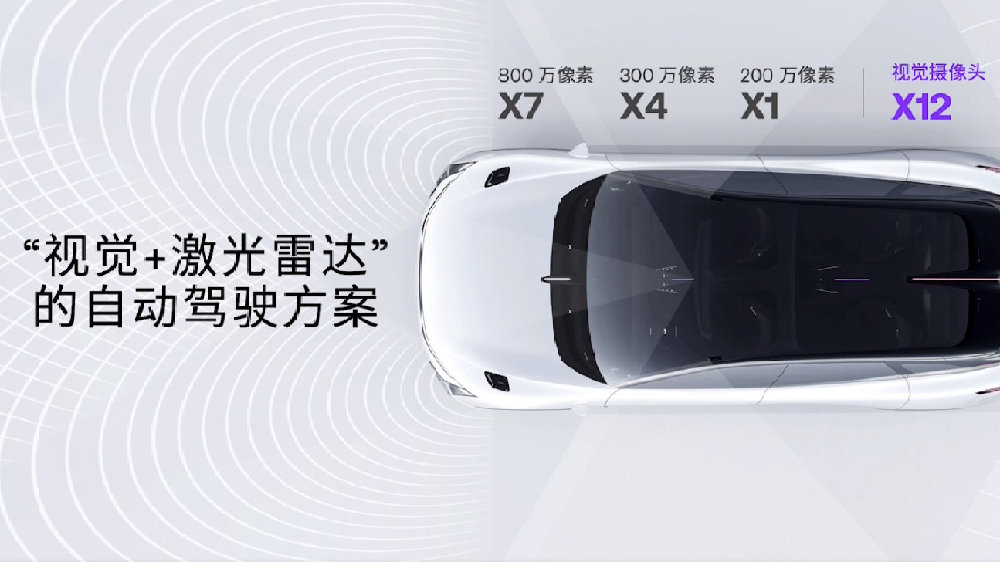June 8th, 2022, Jidu Automobile held a highly anticipated press conference and released their concept car.
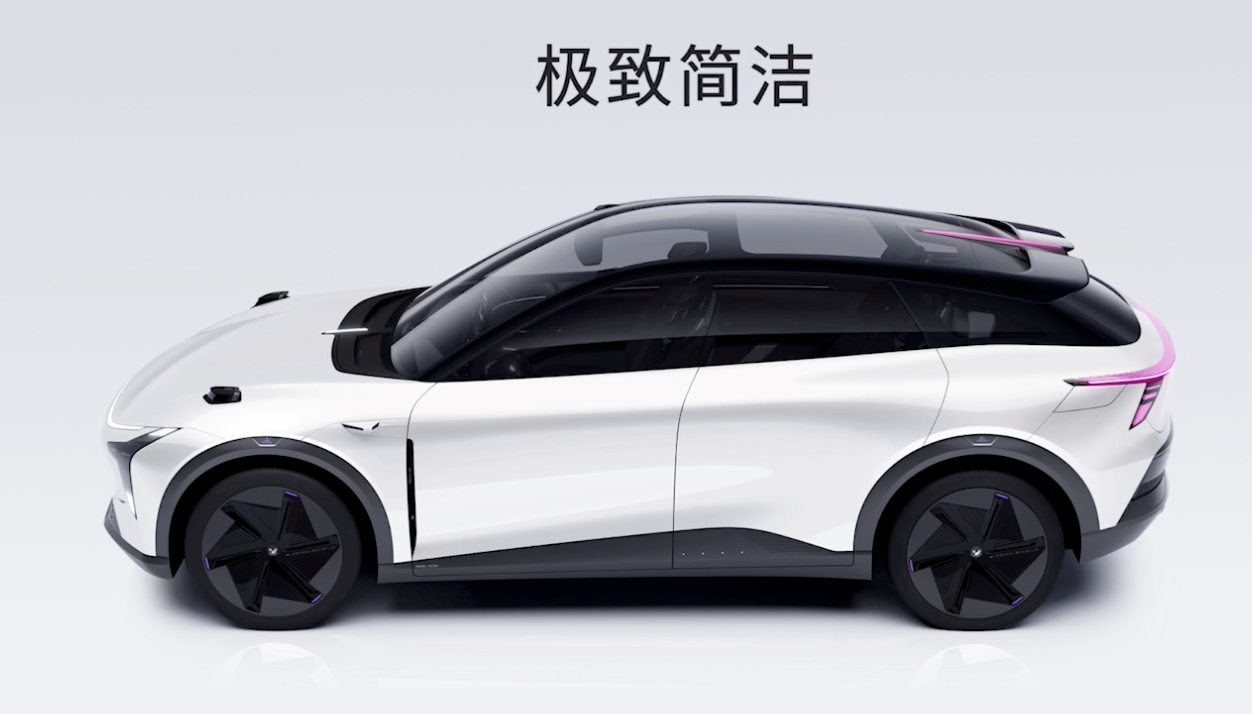
It made me deeply reflect: as one of the pioneers of the autonomous driving industry, just like my former employer Baidu, they only focused on “exporting talent to the outside world” before, and only discovered how difficult it is to land when it was their turn.
To use the same phrase to describe it: “Can’t expect to catch up after starting late”. I don’t know if Jidu can catch up, let’s wait and see.
I am still grateful to Baidu’s autonomous driving department, after all, they were the leader in this field in China. The Apollo (Baidu Apollo) autonomous driving course helped me, a digital blogger who knew nothing about autonomous driving and assisted driving, to achieve preliminary systematic recognition.
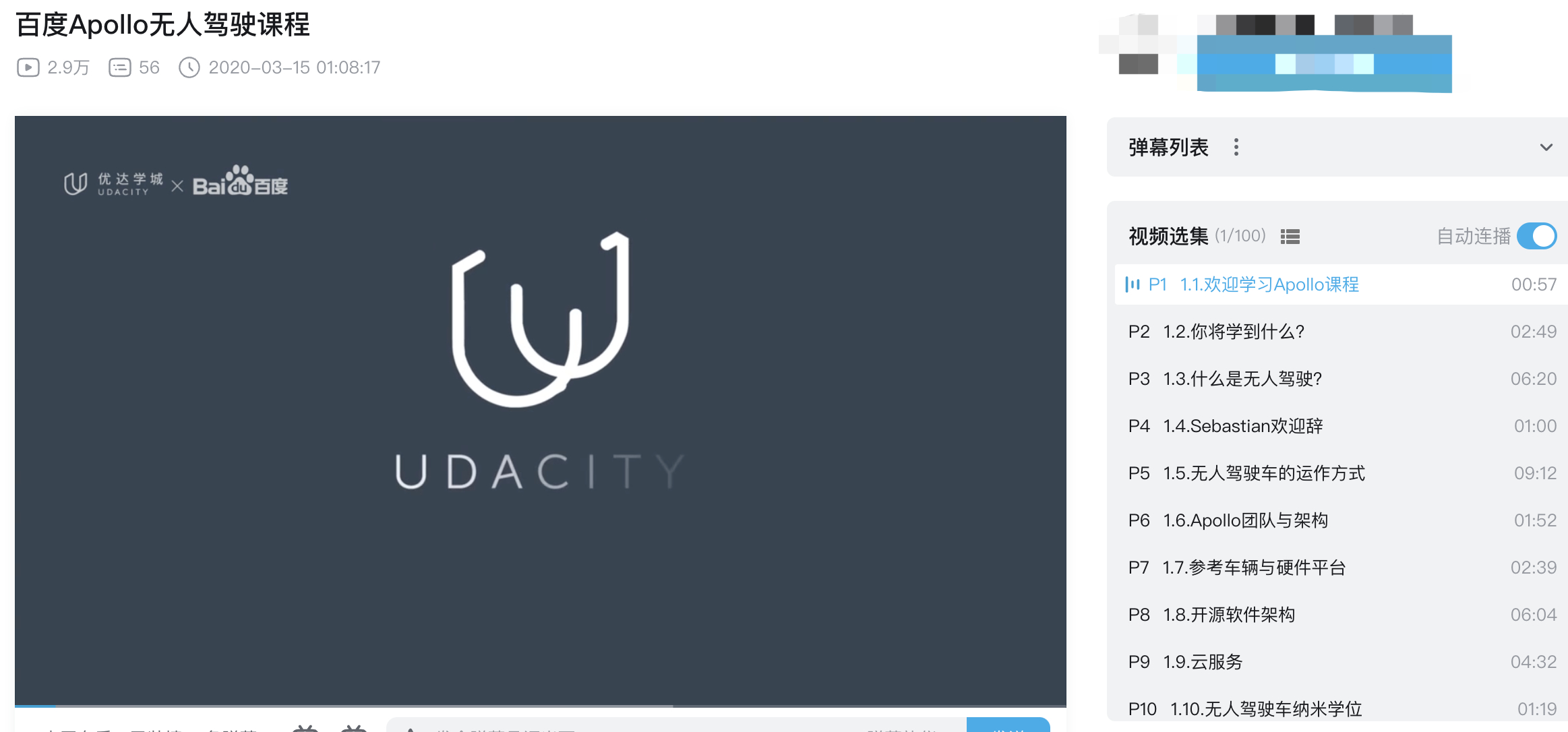
Localization, perception, decision-making, calibration, data fusion, high-precision map… Baidu is not only the company that follows Google the closest in search, but they also follow Waymo closely in the autonomous driving field; Apollo cultivated the first truly competent autonomous driving talent in China who have experience in engineering practice.
But as I said in my previous video “How should Chinese people view autonomous driving”, both Waymo and Apollo have encountered a wall of despair —
“Waymo and Baidu’s biggest problem is their arrogance. They think they can rely on existing human technology and their strong development capabilities to develop a fully automated prototype car in one step, and then continuously reduce costs based on this blueprint until it is eventually commercialized and mass-produced.
However, things did not go as planned. The more they developed, the more complexity they found in autonomous driving, and numerous problems emerged; because there are too many variables on the road, such as all kinds of vehicles, electric bikes, bicycles, pedestrians…even the roads themselves are fighting against them: many places don’t even have clear road markings.
Therefore, the program and algorithm models became more and more complex, the hardware became more and more stacked, even to the point of mixing up water and flour, or flour and water… Projects were delayed like crazy, and the project teams started fighting each other because they couldn’t achieve the goals.”
“And at the beginning, they were extremely ambitious, but the cost of modifying the trial car was extremely high, starting from one million RMB, so the scale of the trial car team was directly limited. A few dozen cars at most, and even thousands of cars at most. Not only was the data collection volume seriously insufficient, but in a vicious circle, it was impossible to reduce costs through large-scale production.”Translation:
In the end, they found out in despair that the so-called L4 autonomous driving was getting further and further away, and the early planned technical architecture was full of holes; however, the amount of burnt money was increasing, becoming an endless pit, and they didn’t dare to start over from scratch.
…..

One-sentence summary: Waymo and Apollo had set their goals too high and were too optimistic about autonomous driving; the current technology cannot be commercialized normally and costs several billions or even tens of billions of RMB annually, driving their bosses crazy.
They did not give up without a fight, trying every possible direction besides making cars themselves, but every attempt was disastrous:
- ROBO Taxi, also known as the “autonomous driving taxi”; equipped with a bunch of cameras and LiDARs on the roof, and assisted by high-precision maps, it can only be operated in a few “closed areas” in first-tier cities through an APP.
But as stated above, the cost of ROBO Taxi cannot be lowered. Baidu was proud of its accomplishment in reducing the cost of modified cars to 480,000 yuan (car model was the BJEV EC series).
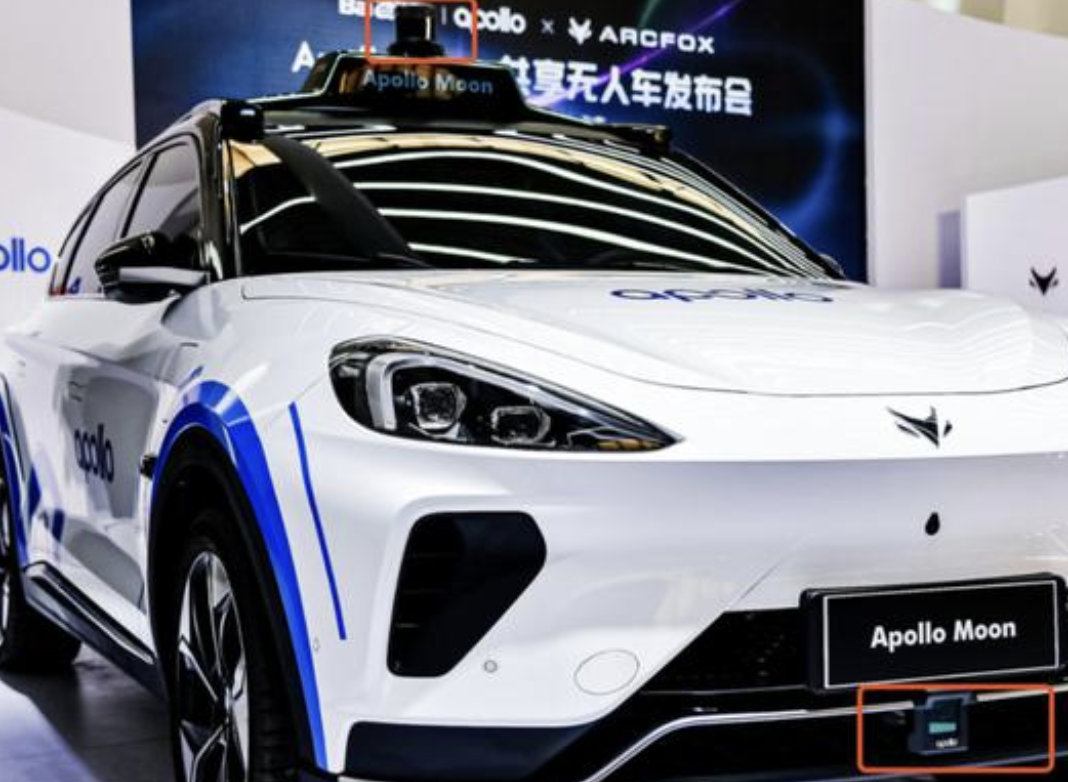
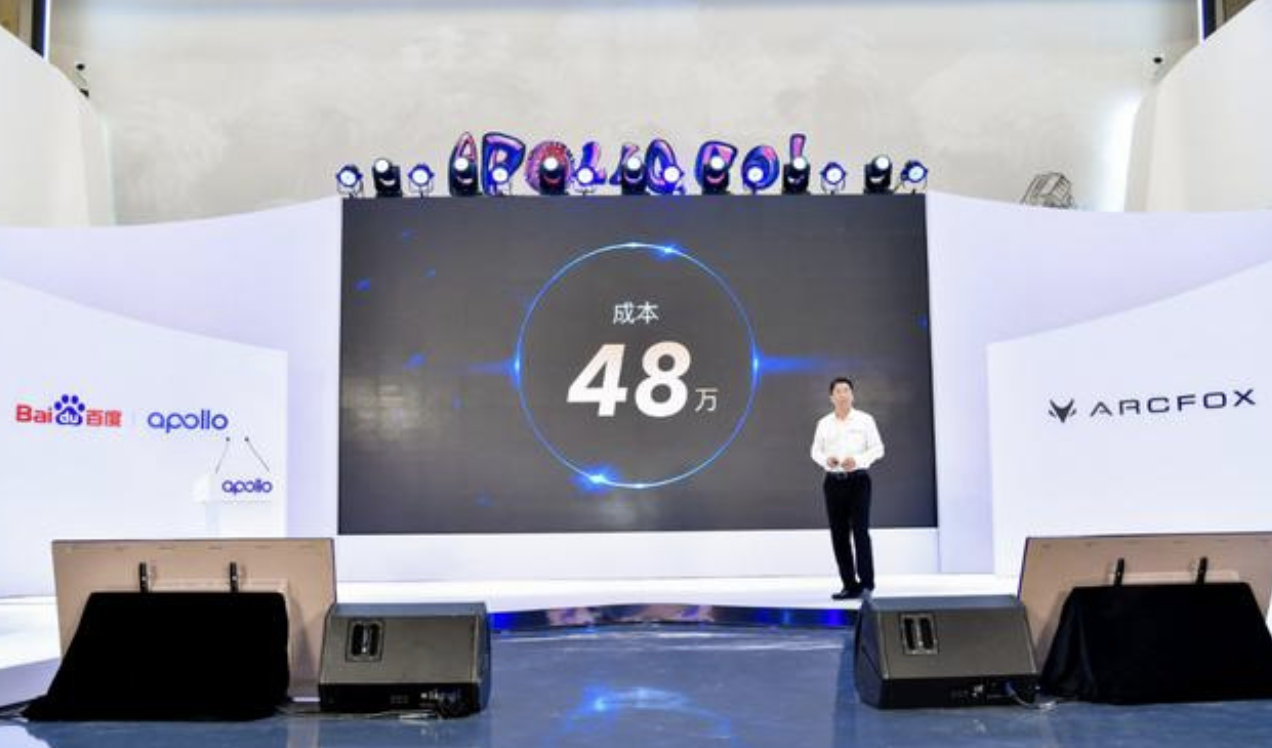
But your technology doesn’t have any strengths either, right? ADAS for environmental sensing + LiDAR for blind spot avoidance, supplemented by mmWave radar…… The new models of new car makers are all the same, and even their perception capabilities surpass yours (LiDAR parameters are even stronger).
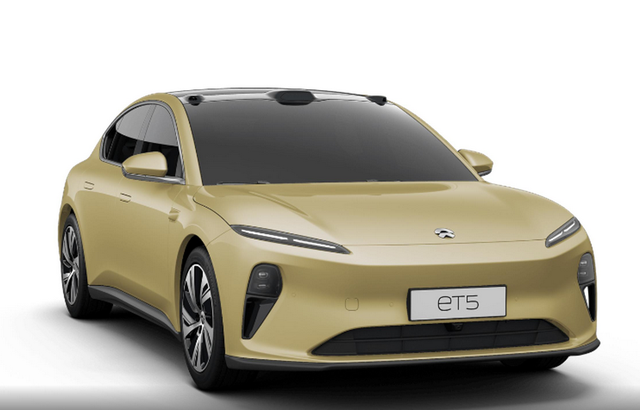
Wait a minute, not to mention the new generation of car models, the current XPeng P5 is about to push for city NGP; P5 costs only a little over 200,000.
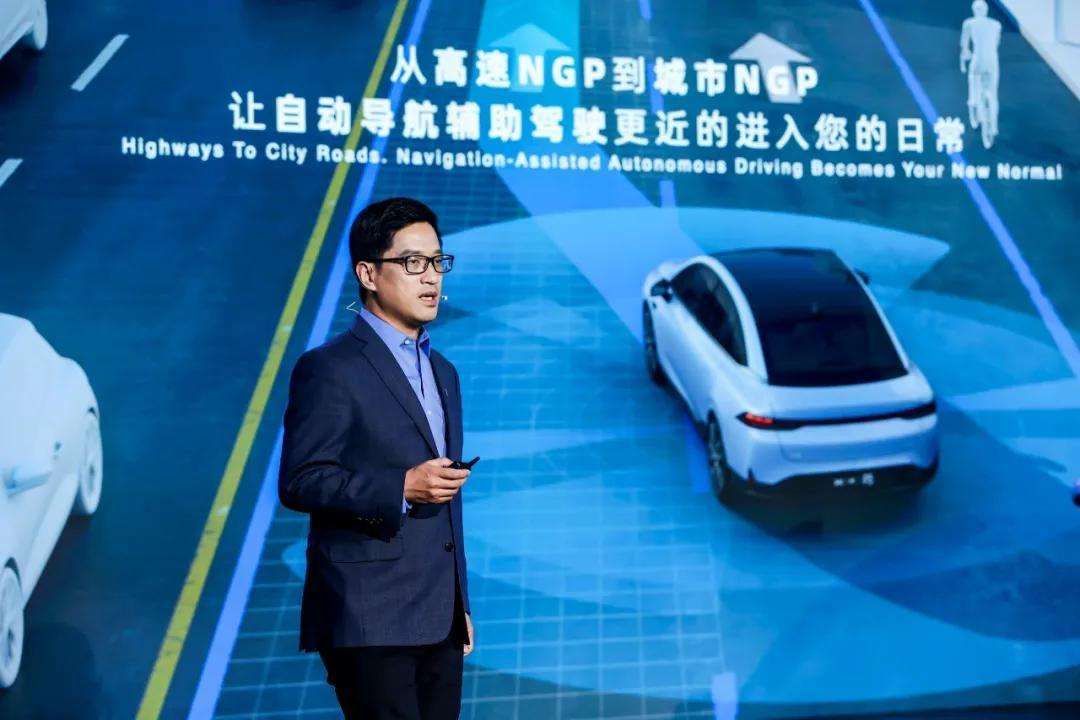
From the information I know, with the guidance of high-precision maps in limited areas, P5, with environmental sensing ADAS and dual LiDARs for obstacle avoidance, doesn’t have worse performance compared to your Baidu ROBOTaxi.
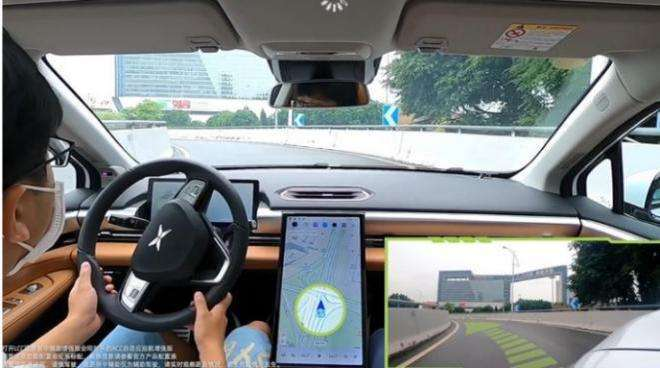 But P5 only costs 200,000 RMB, only 200,000! Even if XPeng installs a ride-hailing system on P5, how much does it cost?
But P5 only costs 200,000 RMB, only 200,000! Even if XPeng installs a ride-hailing system on P5, how much does it cost?
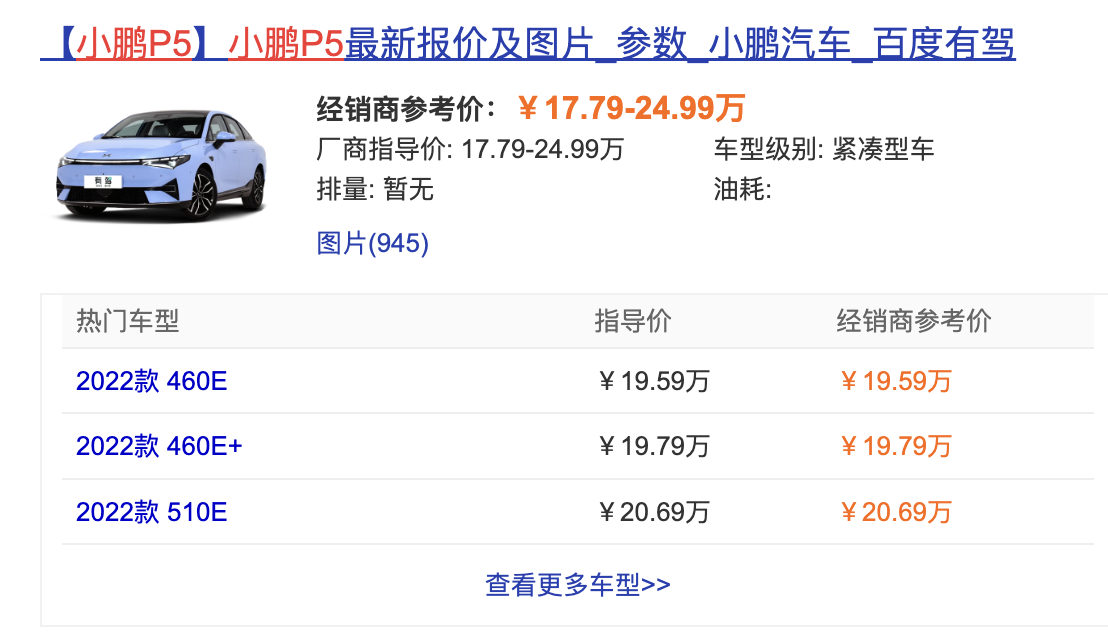
Later XPeng P7 will also be upgraded, NIO will continuously launch ET5 and other models, and there is a sub-brand with a rumored price drop……
At that time, it will be less than 300,000 RMB, with ADAS+ LIDAR running everywhere, and 500T computing power with dual OrinX is still commonplace (NIO: the arms race is here, I have 4 OrinX).
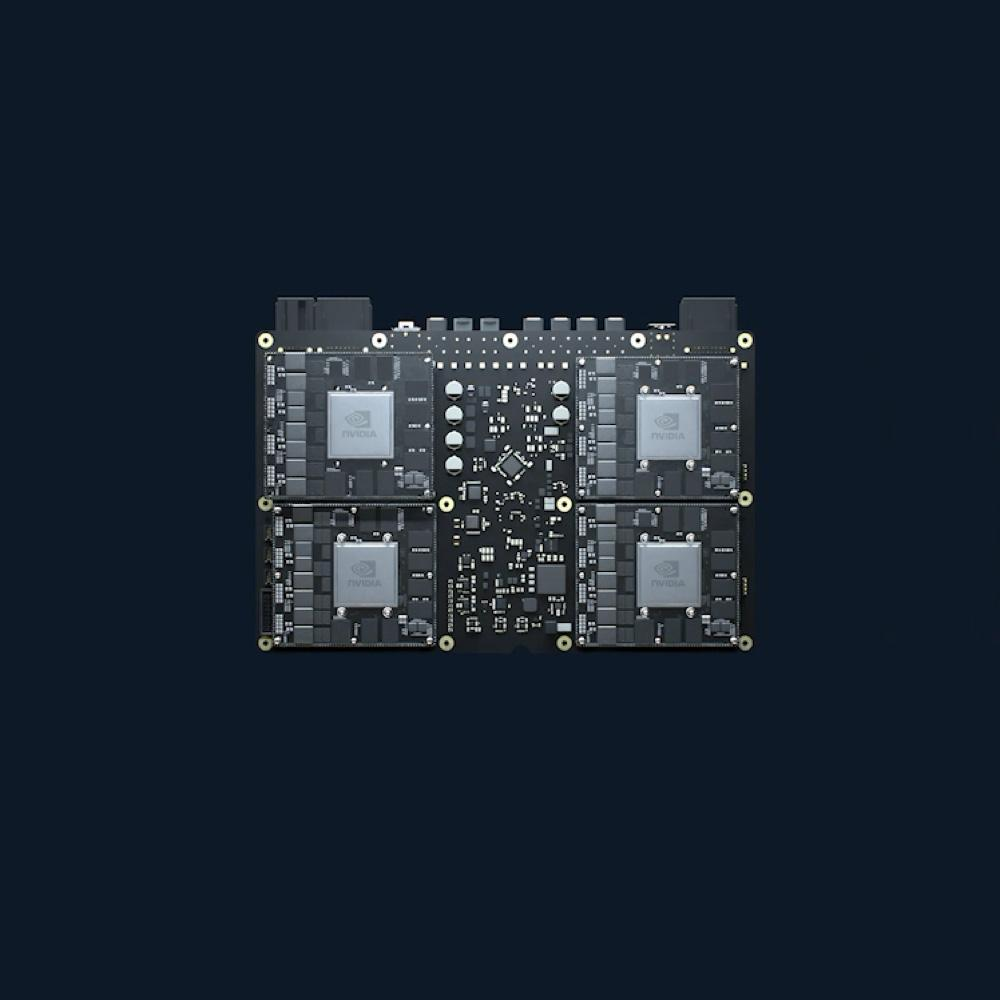
Better perception, stronger computing power, and algorithms that are no worse than yours (China’s autonomous driving industry, elder brother doesn’t laugh at younger brother)… The most crucial issue is that as a new force in the field of automobile manufacturing, they have strong vertical integration and cost control capabilities. They are willing to invest 200,000 to 300,000 RMB in ultra-strong perception and computing hardware.
So Baidu, what is your selling point for ROBO Taxi? Where is the commercial logic? Where is the day of profitability? Your lowest price for a car is 480,000 RMB, how can you win this war?
This road has been completely blocked.
- Baidu waved his hand: “Hold on, I have Plan B.”
Yes, that is to be a self-driving supplier for automobile manufacturers, why not be a party B?
Not feasible ~~
Huawei also has similar ideas, and then first cooperated with BAIC ArcFox, and then with Changan Ovot, and even with an internationally renowned automotive brand.
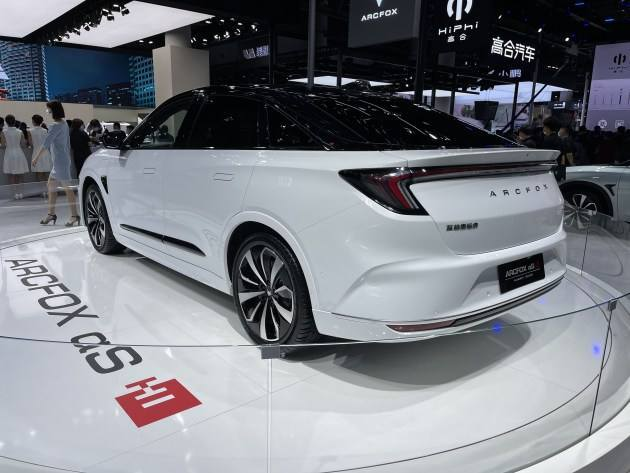
But look at Huawei’s progress:
Although there were some unpleasantness between the two sides during the cooperation of ArcFox Alpha S, and it was delayed for nearly half a year, they still went public after all the ups and downs;
Ovot 11, there are overwhelming news releases-“Huawei has more than 1,000 engineers stationed in the factory”. From what I understand, the progress is relatively fast.
What about the pioneer, Baidu? -It’s still dealing with industry worms. Baidu can’t even handle WM Motors!
The two parties have carried out technical cooperation on WM W6, and AVP automatic parking was first implemented. So WM Motors proclaimed itself as “L4 autonomous driving”, and I criticized it.
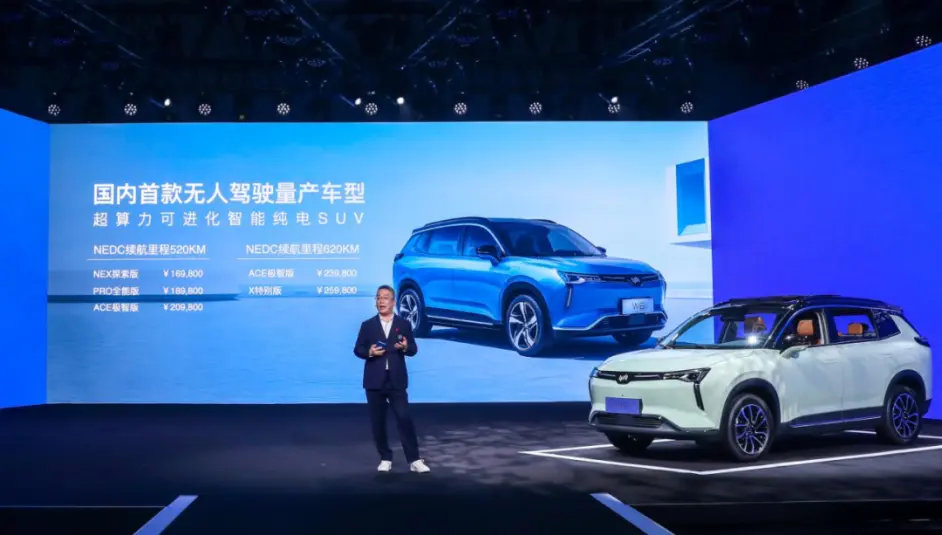
But what’s even more insulting is that – even WM Motors, with such poor performance, refuses to bow its head to Baidu!Except for AVP automatic parking, other assisted driving functions don’t need Baidu! Not even a tiny bit!
You know, Baidu has modified the pure visual ANP solution based on the W6 and has the complete ring-shaped ADAS vision perception capability, which beats the mass-produced W6.
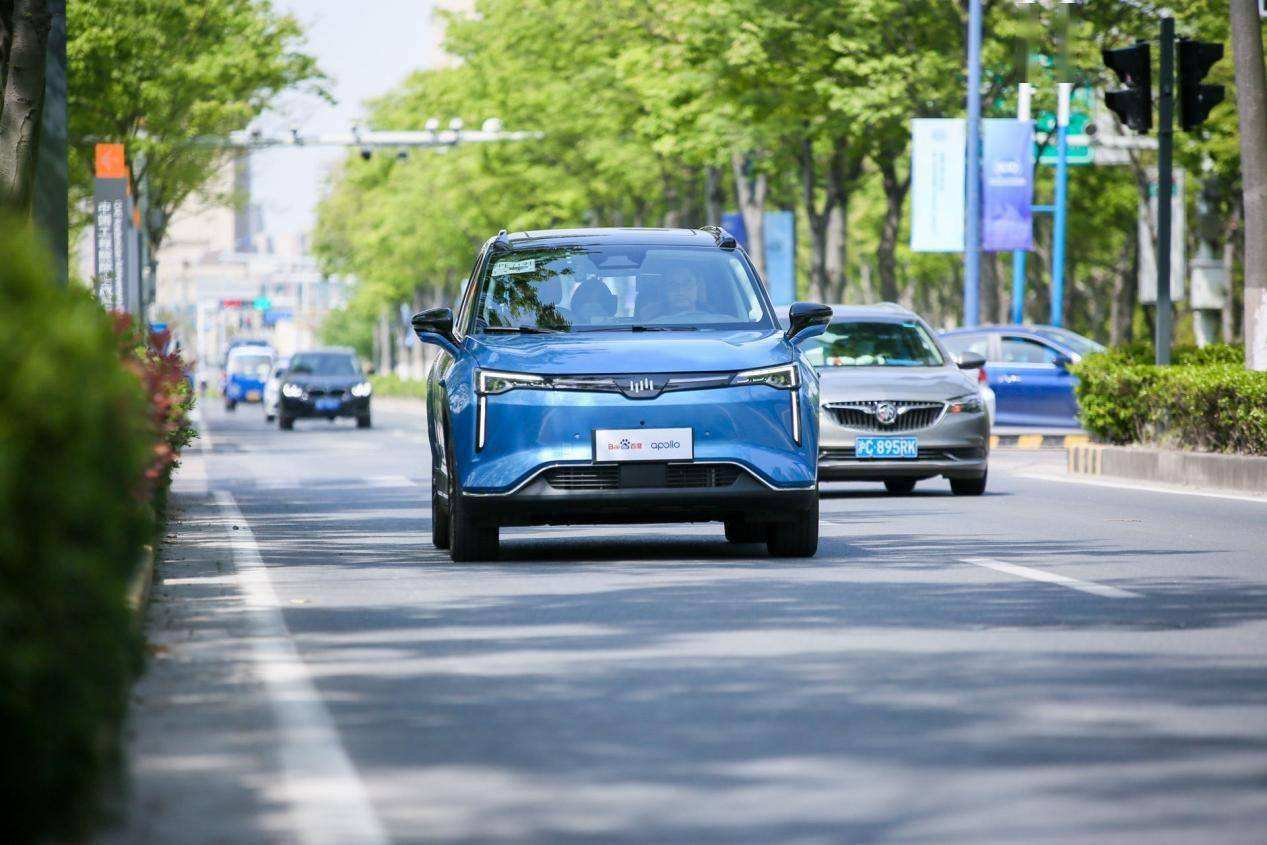
However, WM Motors and Baidu seem to have some conflicts, so this modified version of the W6 has become a solo show for Baidu.
I have a deep impression: at a car event, WM Motors showcased their mass-produced W6, while Baidu invited car celebrities to experience this pure visual ANP outdoors. The two sides had an indifferent attitude towards each other like a 30-year married couple who shared the same bed but slept in different quilts, harboring evil intentions towards each other.
Moreover, Baidu was tough at that exhibit, and the booth staff told me that Baidu was developing a pure visual autonomous driving and had enough technical capabilities to pursue both routes (pure visual and Lidar multi-sensors) to success.
I thought to myself: respect and blessing.
However… this project failed, and WM Motors’ following M7 used the surround-view ADAS + 3 laser radar scheme, with the OrinX as the calculation chip, and I don’t know who developed the software.
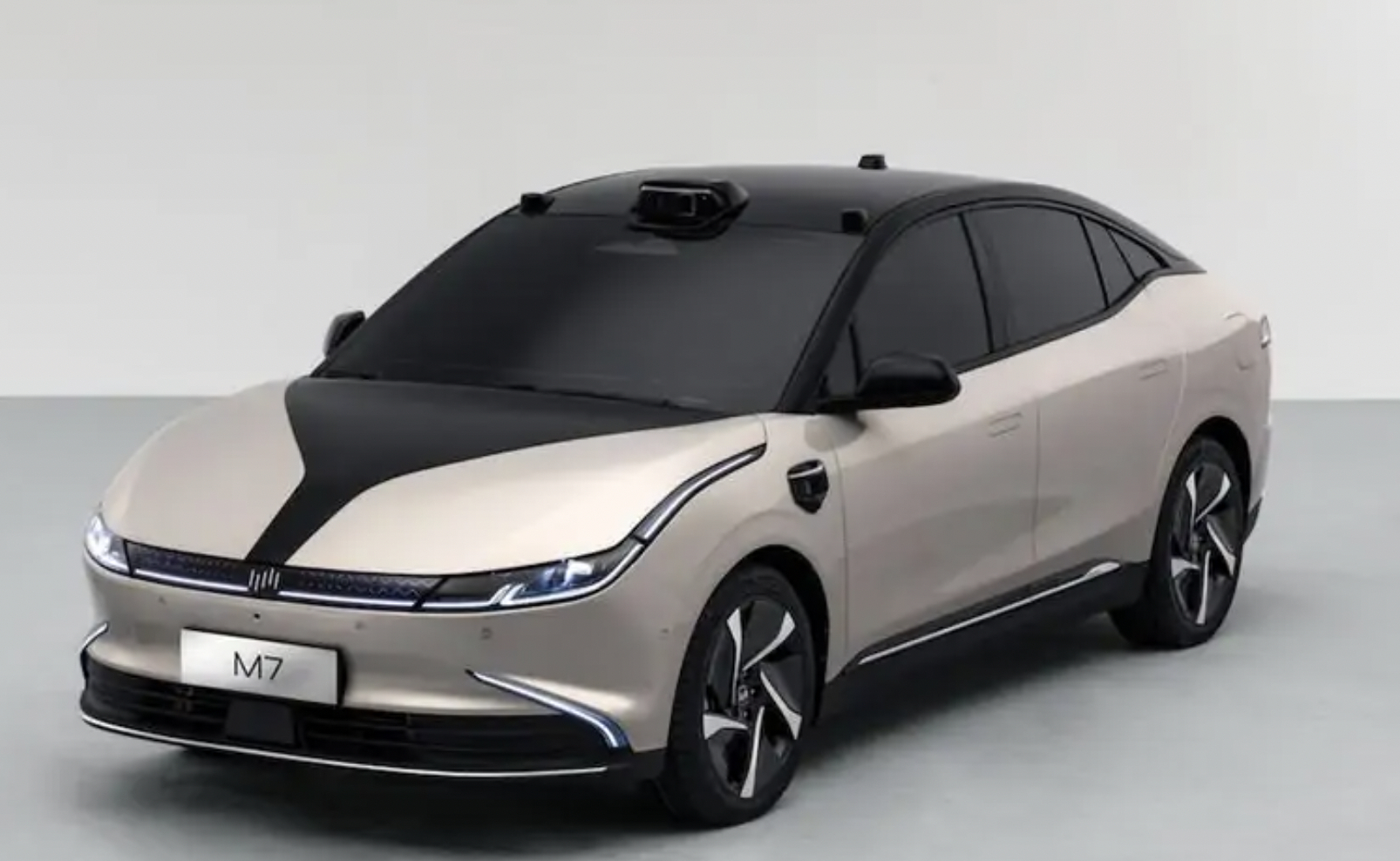
No one in the entire industry had used Baidu’s pure visual ANP solution, and I haven’t seen any other company using Baidu’s Lidar-based solution either.
WeRide develops everything on its own, ignoring you entirely, and only flirts with firms like Horizon Robotics to achieve some low-cost solutions; Traditional automakers flat out wasted time on lousy Bosch and Mobileye solutions, while chumming up to those sweet-talking youngsters like Momenta.
Who needs Baidu? Come on, I can dig my own autonomous driving subsidiary, and it would be better than partnering with you, wouldn’t it?
GWM is just a small part; can’t you give me a thumbs up?

- Then, building cars is the only option left.
But Baidu is worried, or more precisely, Robin is worried~~
Of course! Can anyone not be anxious?! ROBO Taxi and the supplier road have been blocked, and the autonomous driving department has become a never-ending apprentice team for competitors. Anyone would be anxious- “MMM, this is all about money! Tens of billions, hundreds of billions of money!”So Jidu Motors came and hastily launched their project with Geely, going as far as taking a stake and utilizing SEA’s vast architecture. They even used very expensive Kwai 001 carts (technology verification) beforehand.

Just look at the news about Jidu, “xxx days, Jidu has completed xxxx nodes.” They’re trying to make a car in 365 days flat; this reminds me of how it is on the construction site, where the project manager reports the progress of the nodes to the client every day.
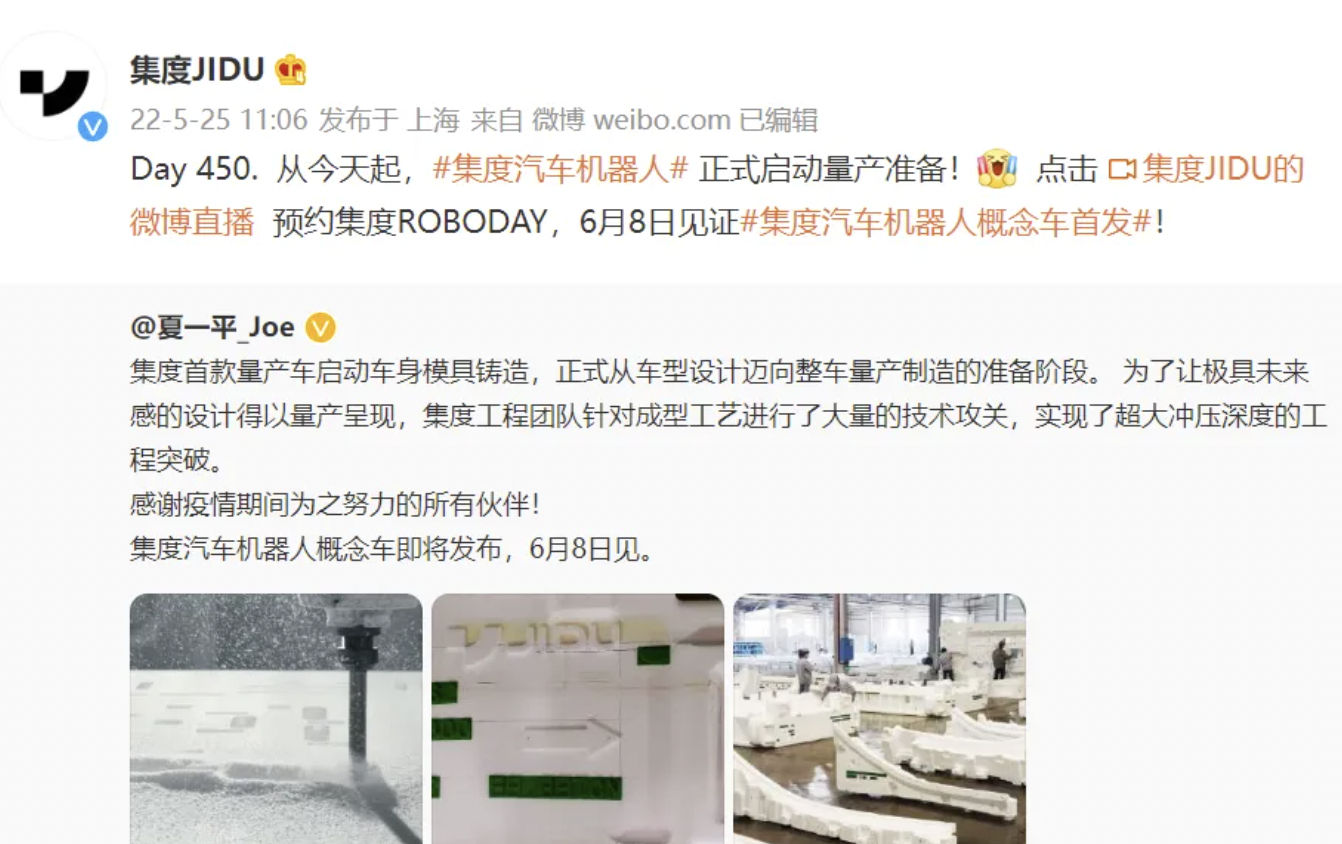
Who is this all for? It’s definitely not for us to see.
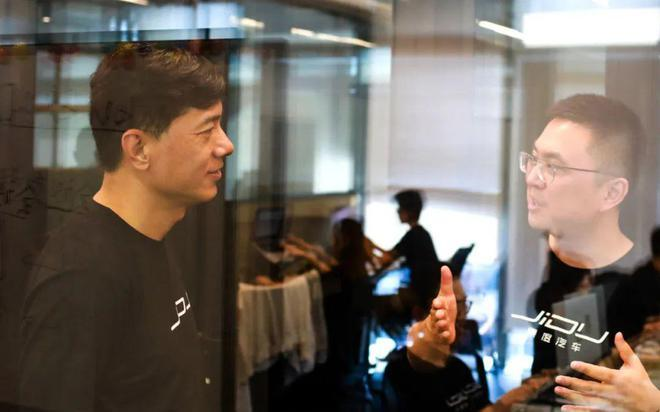
Jidu always puts Robin’s “visiting guidance” at the most crucial position. Do you know who it’s for?
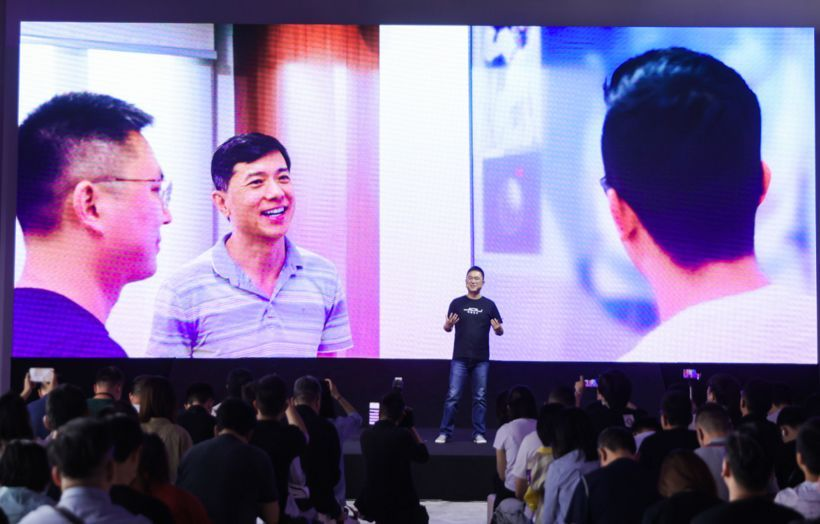
But is it really that easy to create their own automotive industry?
As for joint ventures to establish automotive companies, Geely believes it will play a supporting role, with both sides being partners rather than being in an OEM relationship.
According to Baidu’s statement, the relationship between the two is similar to that of Apple and Foxconn, with Geely “primarily involved in OEM operations.”
This is a rather unstable point: the joint venture’s demands will eventually have to be settled. The cost of building an automotive brand is much too high. If there is any friction or conflict, it may consume both parties’ limited patience and trust.
Even if it hadn’t reached the point of settling, this instability would affect the efficiency of the joint cooperation. I don’t believe this type of relationship will have any positive impact on mass production.
After all, “there is no second day, in the hearts of employees, there can only be one sun!”

Moreover, Jidu Motors is kindly looked after by Robin, which I believe is not a good thing.
I’m just going to be blunt; I’m not in the internet industry. Since Lu Qi left, I haven’t seen any quick rise of any new businesses at Baidu. I personally don’t think Baidu’s top-level management currently has the ability to handle complex products like household cars.
If the pure internet business not involving manufacturing is declining, how can they handle car manufacturing with such heavy assets?Factory construction, assembly line installation, inventory management, sales stores… Having made fast money in the internet industry, can we really endure investing heavily, patiently waiting for returns, and still having low profit margins in the automotive industry?
I have a big question mark just like Godzilla.
Actually, you can see it from the Jidu press conference. First, before the press conference, Zhu Jiang resigned and the Vice President of Jidu Automotive in charge of user development and operation ran away before the press conference…
Then, the online video conference was not held properly, and it had to use Baidu’s “metaverse platform”. Can you believe in the metaverse nowadays? Also, Baidu, can’t you put in more effort? Is this model accuracy made by friends who learned 3D for only half a year?
After that, out of nowhere, there was a “virtual idol”. Dude, why are you putting this thing in a car press conference? Are you selling cars or selling metaverse? Might as well just issue currency.
The car has not even been built yet (the one released today is a concept car), but Baidu has used it to increase exposure for these things…When the car is actually made, do you need to add something to the center console screen?
No way, I was just perfectly fine soaking in the WP7, but you guys squeezed me into Weibo with your ads.
I don’t doubt Jidu’s technology, after all, Apollo is the West Point of China’s autonomous driving industry, and there’s nothing much to say about the technology; whether it’s 360-degree ADAS or LiDAR, Baidu is playing it well; and even they are one of the largest suppliers of high-precision maps for autonomous driving in China.
It’s all stuff they launched first, and they have burned so much money, how could they not have an advantage?
But what I doubt is their internal governance, and the people; big companies always die from internal friction, rather than from truly lagging technology.
ROBO Taxi and the supplier route went wrong twice, and now they are going to build cars themselves and have to entangle with Geely. Robin, the boss above, has been saying “I am Watching you”, and the problem of personnel is max……I hope that Pony.ai can do a great job, break the shackles and bad habits of Baidu in the past, keep the flame of Apollo autonomous driving burning, and provide consumers with more options.
But I don’t know if they can really accomplish it; it is easy to break the mountain bandits, but difficult to defeat the thieves in one’s own heart.
This article is a translation by ChatGPT of a Chinese report from 42HOW. If you have any questions about it, please email bd@42how.com.
